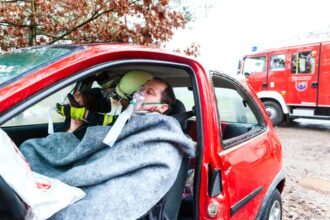The buzz words “patient empowerment” are everywhere today – health blogs, marketing messages, websites, you name it! And the message is that if you just choose the right hospital, or download the right app, you will suddenly be transformed into this incredibly powerful patient and all your worries will be solved. Not quite.
The buzz words “patient empowerment” are everywhere today – health blogs, marketing messages, websites, you name it! And the message is that if you just choose the right hospital, or download the right app, you will suddenly be transformed into this incredibly powerful patient and all your worries will be solved. Not quite.
What matters when you face a serious illness like cancer is becoming an engaged patient. That’s a person who gets better care, maybe even life saving or life extending care, because they educate themselves about their diagnosis and seek truly expert care. So, in this blog, I want to recap a few “how to get the best care” pointers.
Someone who has done this is Una Wilson, a software developer in Seattle. When she was diagnosed with a blood cancer, multiple myeloma, she first saw a doctor who told her she had less than five years to live. Una, a very intelligent woman, spent the following weekend doing her research and learned there was a world renowned myeloma expert, Dr. Bill Bensinger at the nearby Seattle Cancer Care Alliance. She emailed him, he emailed back. She became his patient.
Step 1: Do your research from reliable sources.
Step 2: Identify an expert in your condition and contact them.
Step 3: Put them on your healthcare team.
At the time, Dr. Bensinger was an investigator for a promising new drug, Velcade. Trials are not at every hospital and the idea of being in a trial can be daunting, after all, it’s a scientific “test” of a still-unproven, unapproved medicine or combination of medicines. Una and Dr. Bensinger discussed her participation and she made an informed choice to participate.
Step 4: In cancer care today, always find out about clinical trials and consider participating.
A clinical trial can give you “tomorrow’s medicine today” as it did for Una. Her myeloma responded well to the regimen with Velcade. She was in a perfect position to have a transplant, which was the natural progression at the time. But Una wanted to visit family in Ireland. That was her top priority right then. So, in conversation with Dr. Bensinger, she started maintenance therapy with Revlimid, therapy in pill form. She developed some neuropathy from the medicine but, in close communication with her doctor, Dr. Bensinger helped her manage that. The good news was the myeloma stayed under control. In fact, it has stayed stable and under control with just those pills for six years! During that time Una has traveled the world with regular chats with Dr. Bensinger when she’s home.
Step 5: Have a continuing conversation with your cancer doctor.
Tell them what’s important to you – like Una’s trip – and, together, monitor how you personally respond to a given medicine, which may be different from other people.
Una and Dr. Bensinger are a great example of an effective patient-doctor team and how it has led to the best available care. You can meet them and hear the story in their own words in my video interview with them.
Another example of a great doctor-patient partnership is found in a program about leukemia patient Sandra Stagg and her oncologist, Dr. Jessica Altman. You can learn a lot in this program: How a CML Patient and Doctor Work Together.
I often wonder why people don’t follow the simple steps above. People tell me they, or their aging parent, doesn’t want to show disrespect to the first doctor they see. They hesitate to question them. BUT IT IS YOUR LIFE ON THE LINE! You must ask questions of the best accessible resources. Sometimes you have to travel. But, time and again, it’s worth it.
In my own case, had I not traveled from my home in Seattle to MD Anderson in Houston to see a CLL expert I would have gotten older medicines and I really believe would not be here to write to you today.
Here at Patient Power we are committed to doing our part to bring knowledge to patients but YOU are the one where it all starts. It is you, the patient or caregiver, who has to feel the “power” to follow the steps above. As Una tells us – and as I – and many, many others can attest – being a “powerful patient” gets you better care. Be respectful, be courteous, but look out for number one.
Patient Power has always been unique in our focus on bringing expert knowledge directly to patients. In the coming months we will step up the flow of educational programs for patients with specific cancers: CLL, CML, MPNs, myeloma, lymphomas, lung cancer, melanoma, and sarcomas, to name a few. Interviews with expert physicians, patients, and supporting healthcare professionals, as well as live “town meetings” that produce additional online video content, are done for one reason: we know from personal experience that this information can make a difference in whether or not patients get the best care and live their best lives.
Apps and ads don’t empower patients; acquiring the right knowledge and having the courage to use it for one’s own best health is what constitutes a powerful patient.
As always, I welcome your comments and your stories to help others!








